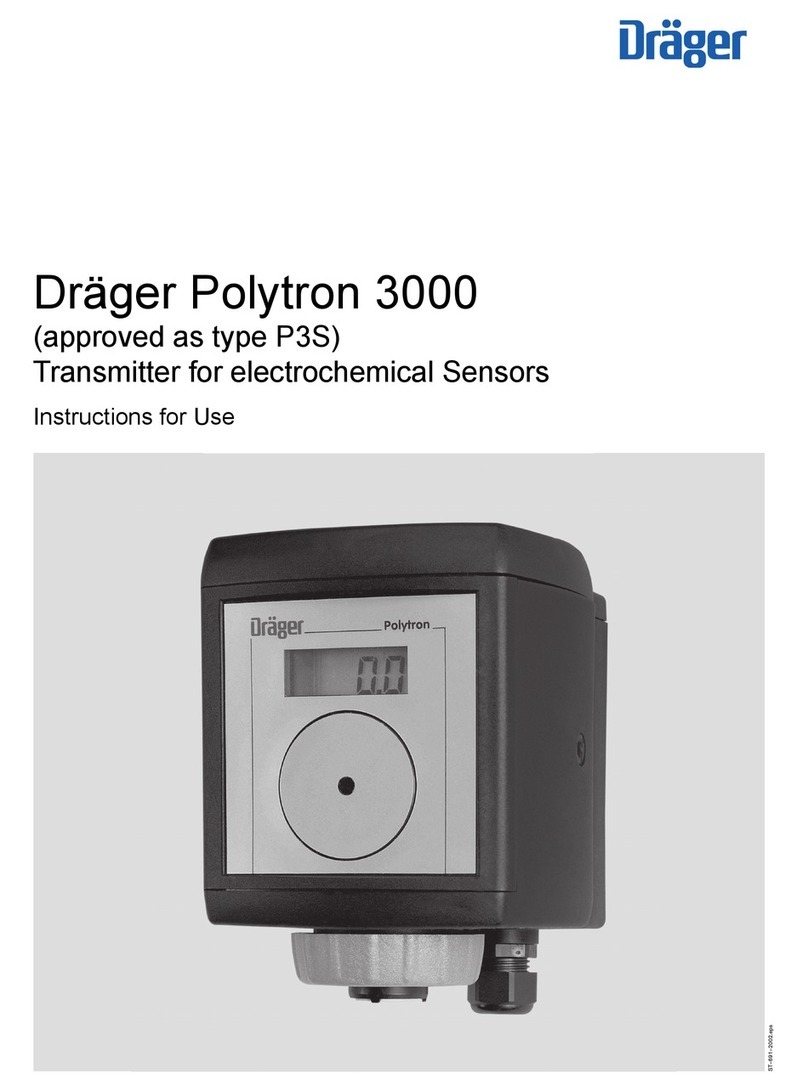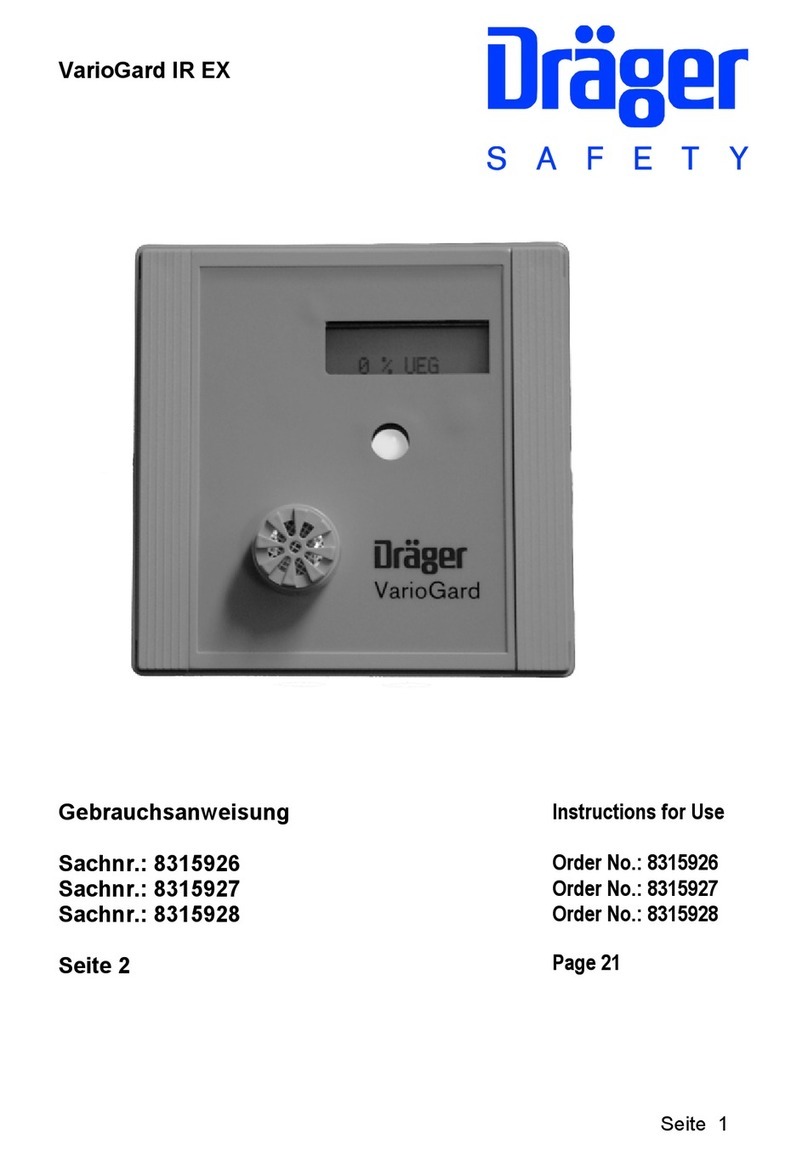Installation
Dräger Polytron 8000 7
3 Installation
3.1 General information for the installation
The selection of a suitable mounting location is crucial for the
effectiveness and performance of the entire system. Every detail
of the installation must be thoroughly thought out. The following
must be noted in particular:
zThe local and national rules and regulations for the
installation of gas measuring systems.
zThe applicable regulations for running and connecting
power and signal cables to gas measuring systems.
zThe full extent of environmental influences to which the
device will be subjected.
zThe physical properties of the gases and vapors to
be measured.
zThe details of the particular application (e.g., potential leaks,
air movements/flows, etc.).
zaccessibility for required maintenance activities.
zThe geometric of the accessories that are used with
the system.
zAll other limiting factors and stipulations that may affect
the installation of the system.
zFor installation without a conduit, an approved cable gland
(e.g. Hawke A501/421/A/¾" NPT or equivalent) must be
used (see chapter 12 on page 31). To increase the RF
interference immunity, it may be necessary to connect the
cable screen to the cable gland and to the control unit.
zThe explosion proof enclosure has three ¾" NPT
connections, which can be used for field wiring, the direct
attachment of a sensor or wiring an external sensor.
Unused openings must be closed off with a plug. For the
correct tightening torques for cable bushings, plugs,
sensors and connectors, see chapter 12 on page 31.
zThe secondary circuit is supposed to be supplied from an
isolating source (does not apply to relay contacts).
zThe optional e-Box has up to four 20 mm connections,
which can be used for field wiring or wiring an external
sensor. The permissible cable diameter is 7 to 12 mm.
zIf the device is installed in locations where ambient
temperatures of over 55 °C prevail, appropriate cables
which are specified for use at temperatures of 25 °C above
the maximum ambient temperature must be used.
zStrip back the insulation on conductors by 5 to 7 mm.
zConnect the cable as shown in chapter 3.5 on page 8
(shown here also with protective ground) or chapter 3.6 on
page 9.
zThe connecting wires for the optional relay module must
be selected and fused according to the rated voltages,
currents and environmental conditions.
zWhen stranded conductors are used, an end ferrule must
also be used.
3.2 Restrictions on the installation
zThe device requires a DC voltage between 10 and 30 V.
The minimum supply voltage of 10 V and the cross-section
of the conductors used determine the distance of the
device from the supply or the central controller
(see chapter 12 on page 31). The device is designed for
cables of size 12 to 24 AWG (0.2 to 2.5 mm2). Use a three-
wire, screened cable as a minimum.
zThe device must not be subjected to any radiant heat
(e.g. direct sunlight) as this will result in a temperature rise
above the specified thresholds (see chapter 12 on page 31).
The use of a reflective screen is recommended.
zThe housing is weather resistant and suitable for outdoor
applications. The use of the optional splash guard is
recommended to protect the sensor from water and dust.
zThe device must be installed and operated in an environment
which conforms to the stated specifications (see chapter 12
on page 31).
zTo insure proper operation of the device, the impedance of the
4 to 20 mA signal loop must not exceed 500 ohms.
Depending on the operating voltage and according to the
application (e.g. HART operation), certain minimum
impedances must be adhered to (see chapter 3.3 on page 7).
The conductors for the power supply must have an
adequately low resistance to insure the correct supply voltage
at the device.
3.3 Impedance range of the signal loop
Devices with a HART interface can be operated with HART
communication or in HART Multidrop mode.
NOTICE
A dust cap can be fitted to the cable entry of the device.
This cap is only used for transport purposes and must
be removed before the device is connected to a sealed
conduit.
Operating mode Impedance range of signal loop as
function of supply voltage
Operation
without HART
communication
Minimum 0Ωin the range from 10 to 30 V DC
Maximum 230 Ωat 10 V DC
linear with supply voltage rising to maximum
500 Ωfor ≥16 V DC
Operation with
HART
communication
(HART mode)
Minimum 230 Ωin the range from 11 to
30 V DC
Maximum 270 Ωat 11 V DC
linear with supply voltage rising to maximum
500 Ωfor ≥16 V DC
HART Multidrop
operation 230 to 500 Ω
11 to 30 V DC
i
i














































